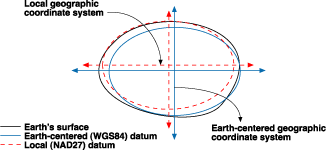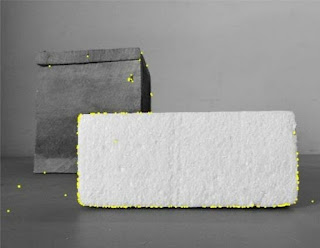Hyperspectral Remote Sensing
Introduction
Hyper is a Greek word for "over", So hyperspectral term is used to distinguish the differences in the amount of spectral bands used in multispectral system. The principle concept of hyperspectral is similar to that used in the multispectral. Also both of them can apply across-track or along-track technique. Here will discuss the difference between them.
Definition:
Hyperspectral (also known as imaging spectrometer or imaging spectroscopy): it acquires images in about tens or hundred ( 64 - 254 ) or more contiguous bands and in a very narrow wavelength range ( 5 um to 10 um) which include (visible spectrum - near infrared - mid infrared - thermal infrared) regions. Examples: Hyperion system on EO1 satellite.
Multispectral scanners can sense a few spectral bands compared to that of hyperspectral. And in a range of (0.3 - 14 um) wavelength including (ultra violate - visible spectrum - near infrared - mid infrared - thermal infrared) regions. Examples: Landsat MSS, Landsat TM, SPOT HRV-XS and IKONOS MS.
Hyperspectral application area:
Precision agriculture: monitoring type, health, maturity of crops, soil type and erosion, Vegetation type.
Costal management: bathymetric changes.
Determination of surface mineralogy.
Water quality.
The chlorophyll content of surface water.
Total suspended matter in water surface.
Snow and ice properties.
Hyperspectral advantages and disadvantages:
It can produce data of sufficient spectral resolution for direct detailed identification of the materials.
It was able to use the remote sensing data to replace that was formally limited on the laboratory testing or expensive ground surveying.
It make it possible to extract per-pixel reflectance spectra which is used in variations of surface composition.
Due to the complexity of hyperspectral images the colour composites of its data are limited to display of three bands not as the multispectral data which is less complicated.
Classification procedures for the hyperspectral data is not developed to the degree as it is for the multispectral data.
Hyperspectral comparison to the multispectral system used in ASTER:
ASTER provide images in 14 different bands ranging from ( visible spectrum to thermal infrared ).
Hyperspectral provide images in more than hundred bands.
Both of them have the same area of application such as vegetation, geology, soils, hydrology, land cover, climate change, land temperature and ecosystem.
ASTER images is useful in application that does not require high number of bands or very narrow wavelength range. for example: Urban heat island diagnosis.
References:
- REMOTE SENSING AND IMAGE INTERPRETATION, Thomas M. Lillesand and others.
- Principles of Remote Sensing An introductory textbook, Wim H. Bakker and others.
- Introduction to Remote Sensing and Image Processing.
- https://crisp.nus.edu.sg/~research/tutorial/rsmain.htm




Comments
Post a Comment